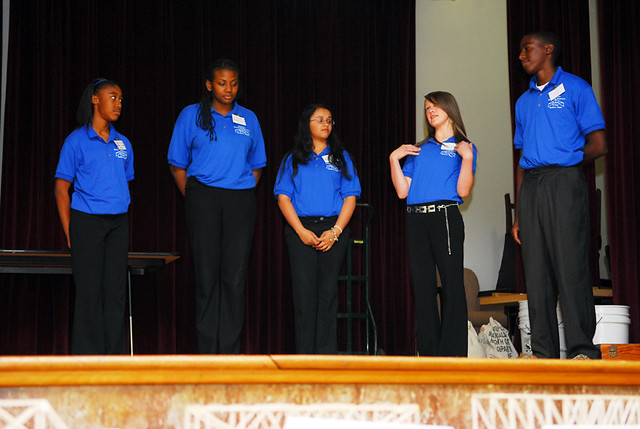
© 2011 NCDOTcommunications, Flickr | CC-BY | via Wylio
There are many benefits to having small groups of students make presentations to their classmates, including the fact that the presenters have an “authentic audience” beyond the teacher.
But how can we maximize its benefit to both speakers and listeners?
One strategy I use, particularly in my International Baccalaureate Theory of Knowledge classes, is have listeners complete this form anonymously sharing what they liked about the presentation and suggestions for improvement.
Listeners complete the form and I collect them for each group until all the presentations are complete. If the presenters are given them prior to that time they are obviously tempted to read them instead of listen to the other presenters.
I’ve used different versions of this form in other classes and it’s generally been pretty successful, though in ninth-grade classes some students don’t take it as seriously as I would like.
In addition to that form, students also have to write down the name of each group and one thoughtful question they would like to ask. Then, the group chooses one student to ask their question and then the group responds to it. I collect the list, and it functions as an effective form of accountability.
What are your suggestions for how I can improve the form and this process?
I’m adding this post to The Best Ideas To Help Students Become Better Listeners.



I teach college students.
I give them a rubric to evaluate their peers presentations. They just have to circle the number for each element. It’s quick and it helps them really think about what makes a good presentation.
My students peer-evaluate presentations each time they are given. The students use the same rubric that has been developed by us all and given to all students in advance of the presentation. A student completes the rubric evaluation with comments about appreciation of something done well and a suggestion for improvement for the next assignment. This student evaluation is part of the package that includes teacher evaluation and self-evaluation.
Thank you for sharing this resource!!